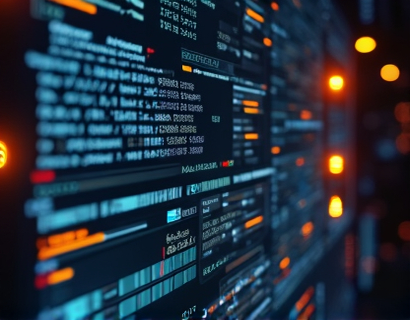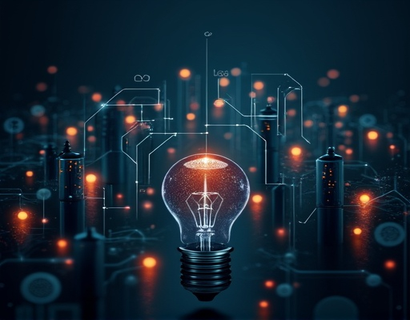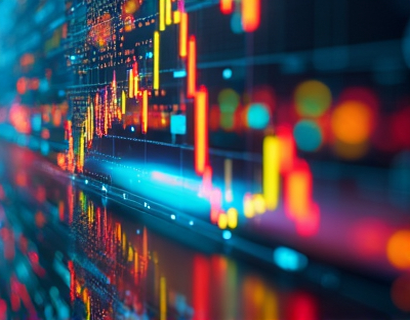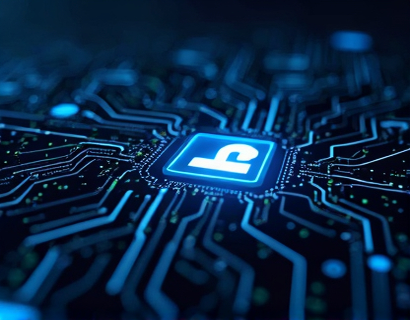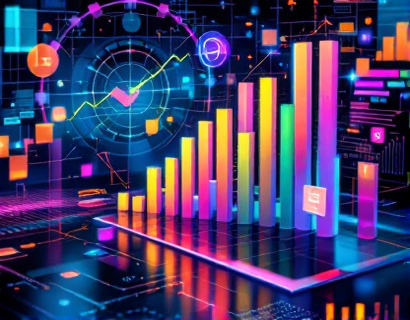Transforming Digital Ecosystems: The Power of AI and Crypto for Enhanced User Experiences
The modern tech landscape is rapidly evolving, driven by the convergence of artificial intelligence (AI) and cryptocurrency. This synergy is revolutionizing digital ecosystems, offering unprecedented opportunities for enhanced user experiences and business growth. By leveraging the strengths of both AI and crypto, tech innovators and early adopters can create more engaging, secure, and efficient digital environments. This article explores the strategic integration of these advanced technologies, providing insights and strategies for maximizing engagement and expansion in the dynamic digital world.
Understanding AI and Crypto: Foundations of Digital Transformation
To fully appreciate the impact of AI and crypto on digital ecosystems, it's essential to understand the fundamental principles of each technology. Artificial intelligence refers to the simulation of human intelligence processes by machines, particularly computer systems. These processes include learning (the acquisition of information and rules for using it), reasoning (using rules to reach approximate or definite conclusions), and self-correction. AI technologies such as machine learning, natural language processing, and computer vision are transforming how businesses operate and interact with users.
Cryptocurrency, on the other hand, is a digital or virtual currency that uses cryptography for security. It operates on a decentralized network, typically a blockchain, which ensures transparency and immutability. Cryptocurrencies like Bitcoin, Ethereum, and others have gained significant traction, not only as alternative forms of payment but also as a medium for decentralized applications (dApps) and smart contracts. The combination of AI and crypto creates a powerful toolkit for building innovative and resilient digital systems.
Enhancing User Experiences with AI-Driven Personalization
One of the most significant benefits of integrating AI into digital ecosystems is the ability to deliver highly personalized user experiences. AI algorithms can analyze vast amounts of user data to identify patterns and preferences, enabling tailored recommendations and interactions. For instance, content platforms can use AI to curate personalized news feeds, while e-commerce sites can offer customized product suggestions. This level of personalization not only enhances user satisfaction but also increases engagement and retention rates.
Moreover, AI-powered chatbots and virtual assistants can provide 24/7 customer support, handling queries and resolving issues in real-time. These AI-driven tools can understand natural language, recognize emotions, and adapt to user behavior, making interactions more intuitive and efficient. By reducing the need for human intervention, businesses can lower operational costs while maintaining high service standards.
Securing Digital Ecosystems with Cryptographic Solutions
Security is a paramount concern in the digital age, and cryptocurrency technology offers robust solutions to enhance the security of digital ecosystems. Blockchain, the underlying technology of cryptocurrencies, provides a decentralized and transparent ledger that is resistant to tampering. This makes it an ideal solution for securing sensitive data and transactions.
Smart contracts, self-executing contracts with the terms directly written into code, can automate and enforce agreements without the need for intermediaries. This not only reduces the risk of fraud but also streamlines processes, making them faster and more reliable. For example, in supply chain management, smart contracts can ensure that payments are made only when specific conditions are met, such as the delivery of goods. This level of security and transparency builds trust among users and stakeholders.
Decentralized Finance (DeFi) and Its Role in Digital Ecosystems
Decentralized Finance (DeFi) is a rapidly growing sector that leverages blockchain technology to create financial services without traditional intermediaries. DeFi platforms offer a range of services, including lending, borrowing, trading, and yield farming, all accessible through decentralized applications. By integrating DeFi into digital ecosystems, businesses can provide users with more control over their financial assets and access to a broader range of financial tools.
For instance, a digital ecosystem focused on gaming can incorporate DeFi elements to allow players to earn and trade in-game assets as NFTs (non-fungible tokens). This not only adds value to the gaming experience but also creates new revenue streams for developers and players alike. The transparency and security of blockchain ensure that transactions are fair and verifiable, fostering a more trustworthy environment.
Tokenization and Its Impact on Digital Assets
Tokenization is another key aspect of the AI and crypto convergence, enabling the representation of assets as digital tokens on a blockchain. This process can apply to various types of assets, including real estate, art, and intellectual property. By tokenizing assets, they become more liquid and accessible, opening up new markets and investment opportunities.
In the context of digital ecosystems, tokenization can enhance user engagement and monetization. For example, a content creation platform can issue tokens that represent ownership or contribution to a project. Users can earn these tokens by creating content, engaging with others, or supporting creators. These tokens can then be traded or used to access premium features, creating a vibrant and incentivized community.
AI-Powered Market Analysis and Cryptocurrency Trading
The intersection of AI and crypto also extends to the realm of financial markets. AI algorithms can analyze vast amounts of market data to identify trends, predict price movements, and optimize trading strategies. This capability is particularly valuable in the volatile world of cryptocurrency trading, where timely insights can lead to significant financial gains.
Trading platforms can integrate AI-driven analytics to provide users with real-time market insights and automated trading bots. These tools can execute trades based on predefined criteria, reducing the emotional bias often associated with manual trading. By combining AI's analytical power with the flexibility of crypto markets, users can make more informed and strategic investment decisions.
Building Resilient and Scalable Digital Ecosystems
The integration of AI and crypto not only enhances user experiences and security but also contributes to the resilience and scalability of digital ecosystems. Blockchain's decentralized nature ensures that systems are less vulnerable to single points of failure, making them more robust against cyber attacks and technical issues. AI, with its ability to adapt and learn, can continuously optimize system performance and resource allocation.
For instance, a decentralized social media platform can use AI to manage content moderation and user interactions, while leveraging blockchain to ensure data integrity and user privacy. This combination creates a more sustainable and user-centric platform that can scale effectively as user base grows.
Challenges and Considerations
While the potential benefits are significant, integrating AI and crypto into digital ecosystems also comes with challenges. Regulatory uncertainties, technical complexity, and user adoption are key factors that need to be addressed. Compliance with existing laws and the development of new regulations for crypto and AI applications are crucial to ensure a stable and trustworthy environment.
Technically, the integration of these technologies requires expertise in both AI and blockchain domains. Developers need to design systems that are not only secure and efficient but also user-friendly. Education and training programs can help bridge the skill gap and foster a community of professionals capable of building innovative solutions.
Future Trends and Opportunities
The future of digital ecosystems lies in the continued convergence of AI and crypto. Emerging trends such as Web3, which envisions a decentralized internet powered by blockchain, hold great promise. Web3 applications can leverage AI to create more intuitive and interactive user experiences, while benefiting from the security and transparency of blockchain.
Another exciting area is the development of AI-driven NFTs and digital collectibles, which can combine unique artistic value with functional utility. These assets can be used in various applications, from virtual real estate to in-game items, creating new economic models and user engagement strategies.
Moreover, the rise of edge computing and 5G technology will further enhance the capabilities of AI and crypto in digital ecosystems. Faster data processing and lower latency will enable more sophisticated AI models and real-time blockchain transactions, paving the way for seamless and high-performance digital experiences.
In conclusion, the strategic integration of AI and crypto offers transformative opportunities for tech innovators and early adopters. By harnessing the power of these advanced technologies, digital ecosystems can become more engaging, secure, and efficient, driving growth and innovation in the modern tech landscape.





























